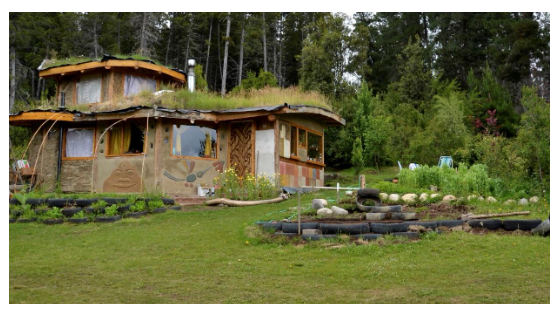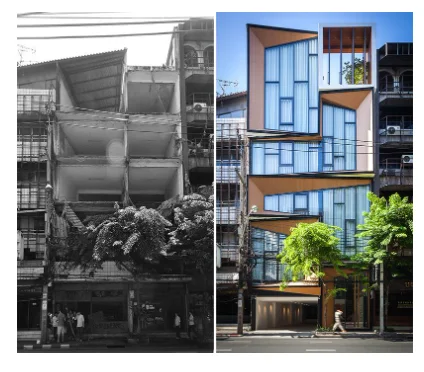Sustainability in Modern Architecture
How the Current Practices in Architecture Have Revolutionized the Building Industry Positively
In the contemporary society, sustainability has been emphasized as the preferred method of development. In the construction industry, architecture has been paramount in defining the types of building that should be put up and how sustainability should be incorporated into the building. Notably many architects pride themselves in exquisite buildings that are complicated and catching to the eye. While this is a good essence of modernization, it is important for them to consider suitable theories and practices and apply them to ensure that the efforts of keeping the environment clean and less polluted are achieved. In the 20th century, sustainability was not considered deeply but the architects usually made renovations that would fit in the desired practices of sustainability. However in the 21st century sustainability has been a major consideration not only in architecture but also in other areas of development (Bonenberg and Kapliński 2018). The increased global warming and the adverse effects of environmental pollution have made it paramount for people to be more cautious when dealing with the environment. It is for this reason that this essay discusses ways in which buildings can prove that they are sustainable as far as matters such as energy, water and waste disposable are considered. However, even with the current development plan on sustainability, there are adverse consequences of the advancement in architecture but by adequately addressing them, it will be possible to integrate architecture and technology in a way that sustainability will be enhanced.

Theory-Driven Practices
The main theory used in sustainable architecture is the theory of green architecture which focuses on the maintenance of natural resources when advancing in new buildings. According to the theory, sustainable architecture should successfully consider using green building materials that are those materials that have less effect on the environment. Another feature of the building should be sustainable water management and having a natural building design as shown in the image below.

When applied in a sustainable fashion, it is possible for the architect to design an eco-friendly building. According to Ragheb, El-Shimy and Ragheb (2016). It is possible for an architect to convert the entire building process by choosing materials with a low level of carbon emission. It is also possible to access the green building standards for almost every building design and given that they are regularly updated, they are able to advice on sustainability practices since when the building is being constructed to when it is being demolished. If the theory is followed, there will be sustainability in the building practices will increase energy efficiency by making use of renewable energy and efficiently using water Bonenberg and Kapliński (2018). Additionally, the theory encourages the minimization of toxic chemicals and waster that are usually realized in the construction of a building. Through green architecture, there are usually social, economic and environmental benefits. Socially, the buildings are meant to be attractive and to have a minimal destruction on the local infrastructure and other buildings. Economically, architects who follow the theory usually minimize the amount of money spent on energy and water by increasing the productivity of the people using the building. The environmental benefits include the reduction of pollution and increased conservation of natural resources while reducing environmental degradation. One way in which this theory can be effected in architecture is by encouraging the incorporation of information communication technology usage and the use of new materials with the intent of reducing the impact the building makes on the surrounding environment.
Architecture in the 20th and 21st Century
The 20th century created a big revolution in many industries across the world. This could be attributed to the increased invention caused by technology and the increased globalization which made it possible for people to share ideas across the globe. As a result, the architecture development in this period could be reflected in other parts of the world. The 20th century was characterized by colonialism and European superiority. The European had established themselves in many parts of the world and this was through colonialism and trade. As a result, their architecture designed could be observed in many parts of the world as shown below.

At this time, architecture was not mainly about technology but was more of an identity with Europeans seeking to show their power to the rest of the world. Additionally, in the early 20th century, resources were in abundance and scientists had not advanced on studies involving the effects of human activities on the environment. The buildings in the early century showed that globalization influenced the designs of the architecture. During the First and the Second World War, the increased movement opened up people to different cultures and different architectural designs, something that they incorporated into their work.
However, in the last decades of the twentieth, there was an increase in high rise buildings as trade increased. Urban centers in North America and Europe were the pioneers in the building and this reshaped the context of architecture. However, the real growth in architecture as explained by Braungart (2002) was experienced in Asia with the region turning to be busiest in building the largest structures in the world. Contemporary, there are several changes that have occurred. Scientists cautioned against global warming and other effects of unsustainable practices in building and this has encouraged many sustainability practices as far as architecture is concerned.
Effect of Current Practices on Sustainability
Ragheb et al. (2016) explain that understanding the areas affected by architecture is paramount in ensuring that the developments made are positively influencing the environment. Land is one of the main things that is affected by any design of architecture. The current practices have been seeking to ensure that the land is used accordingly. This has been through the observation of natural ecologies and the maintenance of natural spaces that are necessary for the comfort of human beings and as Sassi (2006) explains, land is a limited source and have many uses. When erecting any building or making any development, the architects should make sure that they understand the effect of the development on the environment.
Take a deeper dive into Overview of the UK Construction Industry and Brexit with our additional resources.
Dreyfuss, Mifsud and Van Malderen 2013) explains that have been concentrating on environmental architecture to ensure that the architectural world is reacting positively in playing their role in the conservational measures. Architects have been more real and provided designs that provide solutions to issues that are experienced in society. Some of the best solutions to the issues experienced in architecture are usually developed because of the interaction of socioeconomic environment. Sassi (2006) explains that architects have been struggling to maintain the balance and this way they have actively enhanced sustainability in their practices.
The increased interaction of human beings with nature has increased the energy consumptions and scientists have proven that using nonrenewable sources will create advance consequences for nature. The construction industry is one of the sectors that have contributed to increased environmental damage and as Sassi (2006) notes, it is impossible for the society to achieve sustainable development unless the construction sector, which supports all industry, goes through an extensive transformation. Some of the methods that have been used by architects to enhance development and sustainability include looking for materials that pose less harm to the environment and adopting bioclimatic designs. Additionally, more architects have been considering the importance of maintaining the existing building and renovating them instead of building them afresh as shown in the image below.

As a result, this has enhanced sustainability in the sense that fewer materials, energy and water are used in the bringing up of new buildings. However, it is important to determine the nature of the materials used as only the durable materials can qualify to the reuse (Ren and Lyytinen 2008). In this regard, when making new structures, architects have been keen on ensuring that the materials used are durable as this will reduce the need to construct other buildings in future. The contemporary society has been including all people in development processes and it is for this reason that sustainability should be enhanced in ensuring that all people are served by the buildings (Feldman et al. 2013). A building should be built in a way that all people, inclusive of the senior citizens and the disabled are able to access the building with ease.
Notably, the durability of materials not only includes the technical aspects of the building but also the ability of the building to respond to human needs, which keeps on changing, for a long period of time. One way that this has been possible is by the enhancement of energy saving to buildings. For instance, architects have been optioning thermal inertia, which is the ability of a building to respond to the variation of the temperatures inside and reduced the transfer of heat. This attribute has been essential especially to people living in areas where there's a large variety of heat as it ensures that they do not need mechanical solutions to regulate the temperatures in the building.
Another keen issue observed by architects is in project management. Notably, all architects can be considered to be project managers because by giving the design of a house alone, they are questionable for how it should be constructed. As project managers, they have been keen on ensuring that they have been able to balance their creative skills and business. Galloway and Haniff (2015) explain that by following the leadership theories, architects have been able to ensure flexibility and that all their designs are in line with the environment. Great architects have understood the importance of the balance and have even passed the practice to younger architects. It is important for an architect to adapt his or her leadership skills to suit the agenda of the day. Additionally, organizations with good leadership have been nurturing young architects by helping them create ideas that will be used in the development of sustainable construction practices. Also, by encouraging the application of new technology, good leadership in architecture has ensured that sustainability is enhanced in the application of projects.
Counter Argument
In a counter-argument, Bonenberg and Kapliński (2018) explain that sustainability in architecture has been greatly undermined by the inadequate knowledge that the architect has. Moreover, the low-level architectural culture that has been experienced in many cultures depict that there is inadequate knowledge about the essence of sustainable development. While this is generally an underrated issue, it affects the success of the whole idea. As a result, it is impossible for architects to enhance sustainability in his or her projects. However, Porras Álvarez et al. (2016) notes that although the architect's critics have been keen on observing the nature of the industry and the buildings branded as "green buildings" there is a lot of similarities between modernism and sustainability. Moreover, the current buildings have been focused more on the comfort of people by having many amenities which aids in the environmental degradation. The shortcomings of architectural practices can be contributed to the fact that it is essential to consider the aesthetical issues to ensure that human comfort is not compromised by sustainability. The fact that the human population is also increasing shows that sustainability will take a whole but by encompassing modernity and technology it will be possible to reduce the adverse effects of some of the architectural designs.

Conclusion
Architecture has played a big role in the current level of environmental degradation. In the past, some of the architectural designs were not aimed at enhancing the environment but rather on ensuring the expansion of territories across the world. However, in the late 20th century, there was increased knowledge of the importance of environmental maintenance and how architecture could contribute positively to the maintenance of the environment. Through employing creativity into good leadership it has been possible for the architects to ensure that all their activities are in line with the environment. Additionally, by incorporating the latest technology in building projects, the buildings can become more self-sufficient hence reducing movement and conserving energy in the process. Some scholar against the argument argues that it is not viable because of the low level of knowledge among many architects. However, there has been an increased circulation of knowledge and this, in the long run, will enhance sustainability in the architecture.
References List
- Bonenberg, W. and Kapliński, O., 2018. The architect and the paradigms of sustainable development: A review of dilemmas. Sustainability, 10(1), p.100.Braungart, M., 2002. Beyond the limits of sustainable architecture: A new material sensibility for the twenty-first century. Big & Green: Toward Sustainable Architecture in the 21st Century. Princeton Architectural Press: New York City, pp.114-125.
- Braungart, M., 2002. Beyond the limits of sustainable architecture: A new material sensibility for the twenty-first century. Big & Green: Toward Sustainable Architecture in the 21st Century. Princeton Architectural Press: New York City, pp.114-125.
- Dreyfuss, G., Mifsud, M. and Van Malderen, T., 2013. The architectural practice of regeneration. Sustainability, 5(9), pp.3895-3905.
- Feldman, R.M., Palleroni, S., Perkes, D. and Bell, B., 2013. Wisdom from the field: Public Interest Architecture in practice. PDF. The American Institute of Architects.
- Galloway, L. and Haniff, A., 2015. Managing Projects in Architecture: A Study of Leadership in a Creative Industry. Open Economics and Management Journal, 2(1).
- Porras Álvarez, S., Lee, K., Park, J. and Rieh, S.Y., 2016. A comparative study on sustainability in architectural education in Asia—with a focus on professional degree curricula. Sustainability, 8(3), p.290.
- Ragheb, A., El-Shimy, H. and Ragheb, G., 2016. Green architecture: A concept of sustainability. Procedia-Social and Behavioral Sciences, 216, pp.778-787.
- Ren, M. and Lyytinen, K.J., 2008. Building enterprise architecture agility and sustenance with SOA. Communications of the Association for Information Systems, 22(1), p.4.
- Sassi, P., 2006. Strategies for sustainable architecture. Taylor & Francis.
- 24/7 Customer Support
- 100% Customer Satisfaction
- No Privacy Violation
- Quick Services
- Subject Experts



